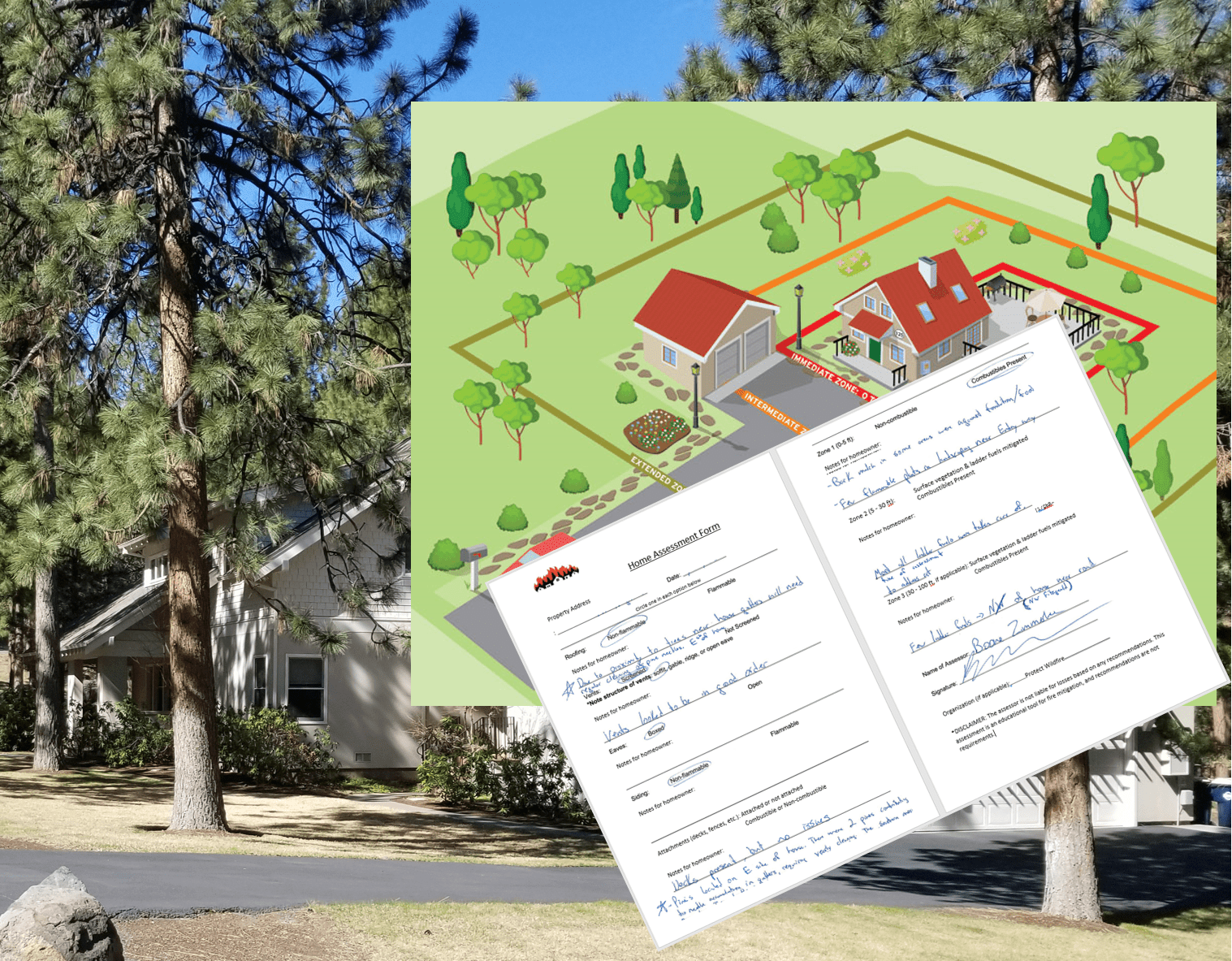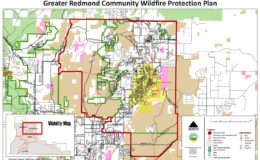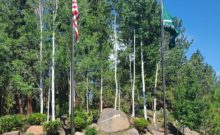Borrowing from Broken Top’s example and resources found on ProjectWildfire.org website I have put together steps as a guide with tips and suggested resources to help communities plan neighborhood assessments or other Firewise projects throughout Deschutes County.
The below process could be applied to just about any kind of Firewise project planning, but in this case I applied it to home assessments, which is the process of looking at the home and the immediate surroundings using a set of criteria to determine how vulnerable a home and its surroundings are to wildfire damage. Assessments are a great way to give homeowners a place to start their defensible space efforts. This could either be a yearly assessment hoping to achieve 100% of the homes assessed or something as simple as a service to assess homes on a one on one basis at the home owners’ request. If a larger project is planned it’s best to decide on the timing of the event and then work on a timeline of steps leading up to the event. Most successful events are planned to be completed prior to the onset of fire season in June or July. This timing will ensure that wildfire is on peoples mind and will help to create a sense of urgency or importance that will likely increase participation. The timeline below assumes the final project being completed by May which is wildfire preparedness month.
Home assessments are a great way for homeowners to identify and prioritize the work that needs to be done to increase their defensible space. Depending on your community size you may be able to do the assessments with a single person, but if tackling an entire neighborhood, likely you will need a team of a few folks that can talk about defensible space. Classes are offered to educate those doing the assessments along with many supporting documents. If you are unfamiliar with home assessments the Insurance Institute for Business and Home Safety (IBHS) also has online resources you can review that include their Wildfire Home and Property Checklist and the Pacific Northwest Wildfire Retrofit Guide.
As you work on your defensible space program in your community, I encourage you to take advantage of resources found on PriojectWildfire.org and all the good work that other communities have pioneered for us.
Step 1: Early Engagement – (Late February- early March) The earlier you can engage the community the more support you can build. In planning projects, soliciting for input can help with giving your community members ownership in the program. As early as February you can begin reaching out describing the need for defensible space and offer the opportunity to others to participate in planning and even perhaps volunteering to help in conducting the actual assessments. This is a good opportunity to include some basic defensible space principles. Set the dates that assessment would take place (Late April). Selling this as a service and not a requirement can help reduce resistance. If you are planning a mailer Deschutes County Dial (https://dial.deschutes.org) system and the data portal can be a place to find mailing addresses.
Step 2: Maintaining Transparency and Setting Expectations – (April- early May) Prior to fire season, email/mail out the assessment forms to all the homes in the community so they can see what they need to take care of and they know what to expect. This is also a good time to send any supporting documents. This may be another opportunity to solicit for input. This step would be best to be planned before events like FireFree so homeowners can take advantage of the event if doing the work on their own. If you are offering this as a requested service, this is the time to start scheduling. Google Forms has a nice add-on, “Choice Eliminator”, that can be useful when scheduling appointments. However; this doesn’t have to be complex, a simple email/phone call and a calendar works just fine.
Step 3: Follow Through – (April- Early May) Have a consistent process of assessing properties for you and your team to use. Use a top down approach starting with the roof then working out through the 3 zones. This keeps you on track and helps give the same message to all homeowners. Plan a daily assessment load that will allow for extended visits as needed. At the end of your visit you should keep a copy and leave the assessment with the homeowner when you are done. A simple picture can work well as your copy of the assessment. An alternative to paper forms can be an online google form that has the assessment elements as questions and gathers email addresses to send the results back to the landowner. Google Forms can compile all results and allows assessors to use their electronic device to enter the data versus paper documents that can get lost.
Step 4: Recognition and Evaluation – (June) Once the event is over it is always good to take the time to celebrate the success, thank all the folks that contributed and especially those that went the extra mile. The other piece, that is often overlooked, is the evaluation of your efforts. For future planning this can be quite important to ask, what was planned, what went well, what did not go well and what do we need to adjust in preparation for next year. These questions aren’t just for yourself, but maybe more important for your team and the community members. Injecting the feedback into next years project has potential to ease the work load, speed up your process and gain greater buy-in.


